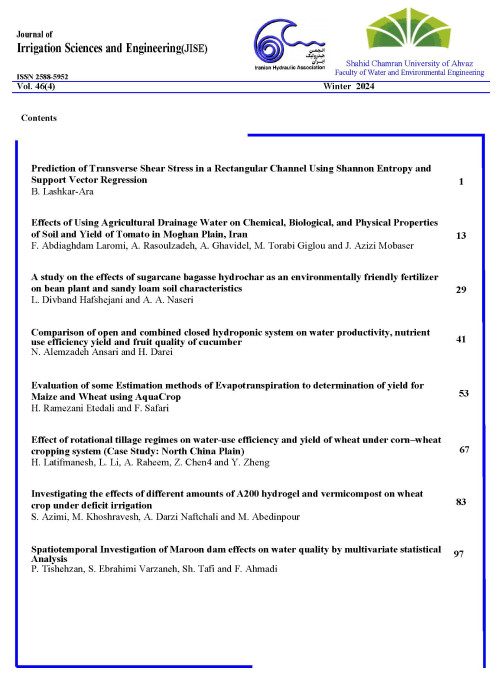The Effect of Climate Change on Volume of Water Resources and Transfer of Inter-Basin Water
Climate change is a serious challenge to human interest by its adverse effect on various sectors, such as water sources, agriculture, and energy. According to IPCC report, the average annual temperature of the earth has been raised between 0.3 to 0.6º</sup> because of the spread of the greenhouse gases, and this report predicts this amount will increase between 1 to 3.5º</sup> until 2100(Boberg et al ,2010). To study the effect of greenhouse gases in the atmosphere and the oceanic-atmospheric, general circulation model in regional scale is the most efficient vehicle. These models have been developed to simulate the current climate. They also performed well in predicting future changes in the climate and simulating interactions of soil, atmosphere, and oceans (IPCC, 2007). The effect of climate change on water sources is assessed using rainfall-runoff models by simulating hydrological processes. Studying future climate change and its likely events will help planners and water sources administrators to cope with the future challenge. Considering these likely changes will contribute to objective planning toward optional operations. Predicting future runoff value is one of the most important factors about dam construction, water transferring, agricultural growth and industrial activities. Semenov (2008) assessed LARS-WG performance by data from 20 representative stations. Babaeian et al, (2004) and Khaliliaqdam, et al( 2013), studied the effect of climate change on the hydroelectric reservoir of Jor Dam by the microclimate model LARS-WG and scenarios B1, B2, and A1B. Output results of the model showed that Tmin and Tmax will increase to the amount of o.3-0.6 degrees. As a result, available water reservoirs of behind the dams for hydroelectric generation are affected by the decreased rainfall. BaniHabib et al, (2016), simulated the input flow of Shahcheraghi Dam using the generator LARS-WG, data downscaling, and the function of artificial neural networks on output of LARS. They found that nightly and daily temperatures rise 1.1 and 1.2 degrees from 2015 to 2040, and rainfall will decrease by 9% during January. By simulating artificial neural networks, it was determined that the input flow will experience 2.4-4.1 % decrease based on different scenarios.
- حق عضویت دریافتی صرف حمایت از نشریات عضو و نگهداری، تکمیل و توسعه مگیران میشود.
- پرداخت حق اشتراک و دانلود مقالات اجازه بازنشر آن در سایر رسانههای چاپی و دیجیتال را به کاربر نمیدهد.


